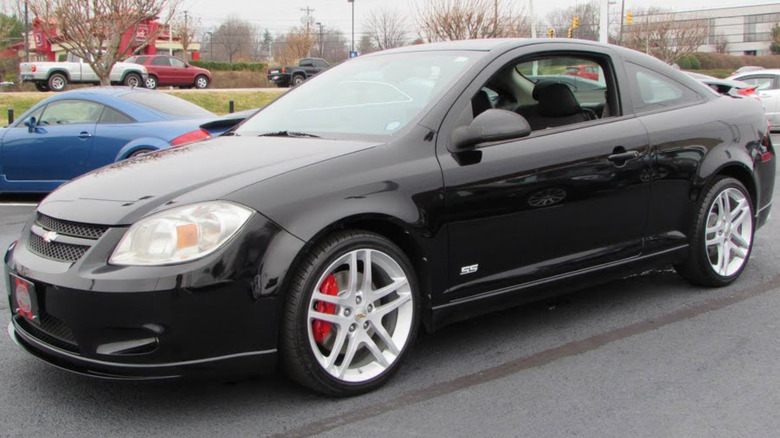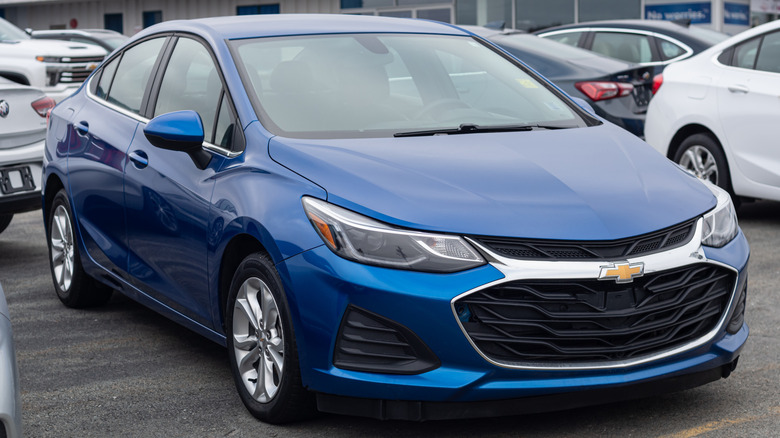What Happened To The Chevrolet Cobalt SS Turbo?
Despite getting great gas mileage, the Chevrolet Cobalt received mixed reviews from many drivers during its years of production. Meant to replace the Chevy Cavalier, the Cobalt was a dependable, though somewhat boring, compact economy car. That said, the Chevrolet Cobalt SS Turbo was different.
Though it was discontinued with the rest of the Cobalt line in 2010, the Turbo more than lived up to the SS badge. It was quicker than similar models like the Honda Civic Si, going 0-60 in 5.5 seconds, and had a top speed of 160 miles per hour. It featured a 5-speed manual transmission, a 2.0-liter 4-cylinder engine, and a launch control system. The Cobalt had other upgrades as well, with a stronger chassis, bigger wheels, and better brakes. Though all of these features could've broke the bank, the Cobalt SS Turbo was actually affordable, costing less than $25,000. Lightweight, fast, and powerful, the SS Turbo was indeed a step above the original Cobalt.
But the Cobalt line lasted only five years before Chevrolet pulled the plug on manufacturing in the United States. Videos of a flashy new Chevrolet Cobalt surfaced on social media in 2025, leading many to believe the brand, possibly the SS Turbo itself, was making a comeback. But those videos were created by AI, and as of this writing, neither General Motors or Chevrolet have confirmed such a return.
From the Cobalt to the Cruze
Originally built in General Motors' plant in Lordstown, Ohio, from 2004 to 2010, Chevrolet moved manufacturing of the Cobalt to Brazil in 2011. Production of the Cobalt continued, with the car receiving a redesign that kept it on the road until 2019. Even after that, the Cobalt kept going and is still being built and sold in Uzbekistan, a Central Asian country. UzAuto, once known under the name of GM Uzbekistan, manufactures the Cobalt, along with other models, including the Chevrolet Damas and Lacetti.
The absence of the Cobalt in the United States was offset by its replacement, the Chevrolet Cruze. The two were similar when it came to engine output, at around 155 horsepower. But the Cruze was more expensive, and when it came to the used market, the Cruze could cost thousands of dollars more. However, the real differences between the Cobalt and Cruze quickly became evident with everyday driving. The Cruze was roomier, and averaged about 32 miles per gallon, while the Cobalt came in at 30 miles per gallon. The Cruze also had a 33 mile range advantage overall on the highway.
Though the Cruze went on to become Chevy's top-selling car around the world, it was discontinued in the United States in 2019. International production stopped shortly afterward, with mid-size SUVs filing the gap left behind. One of those SUVs is the Chevy Trax, which is similar to the Cruze in terms of overall design and handling.

